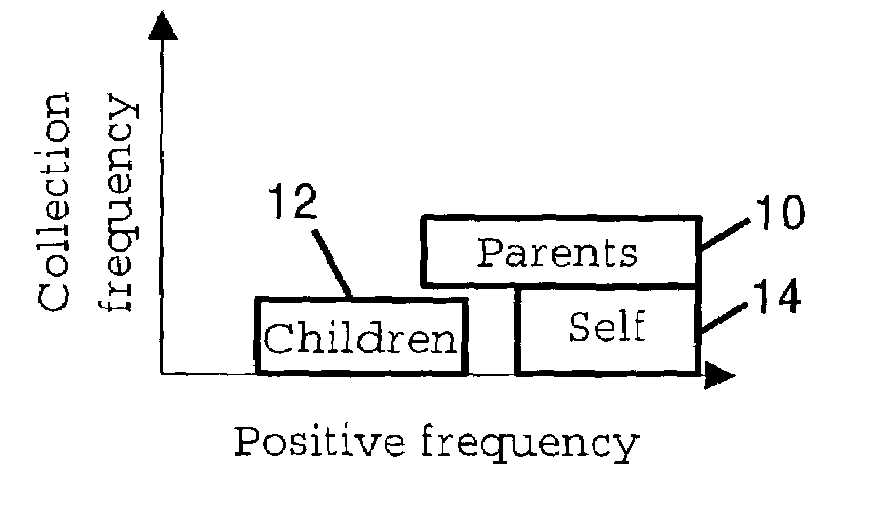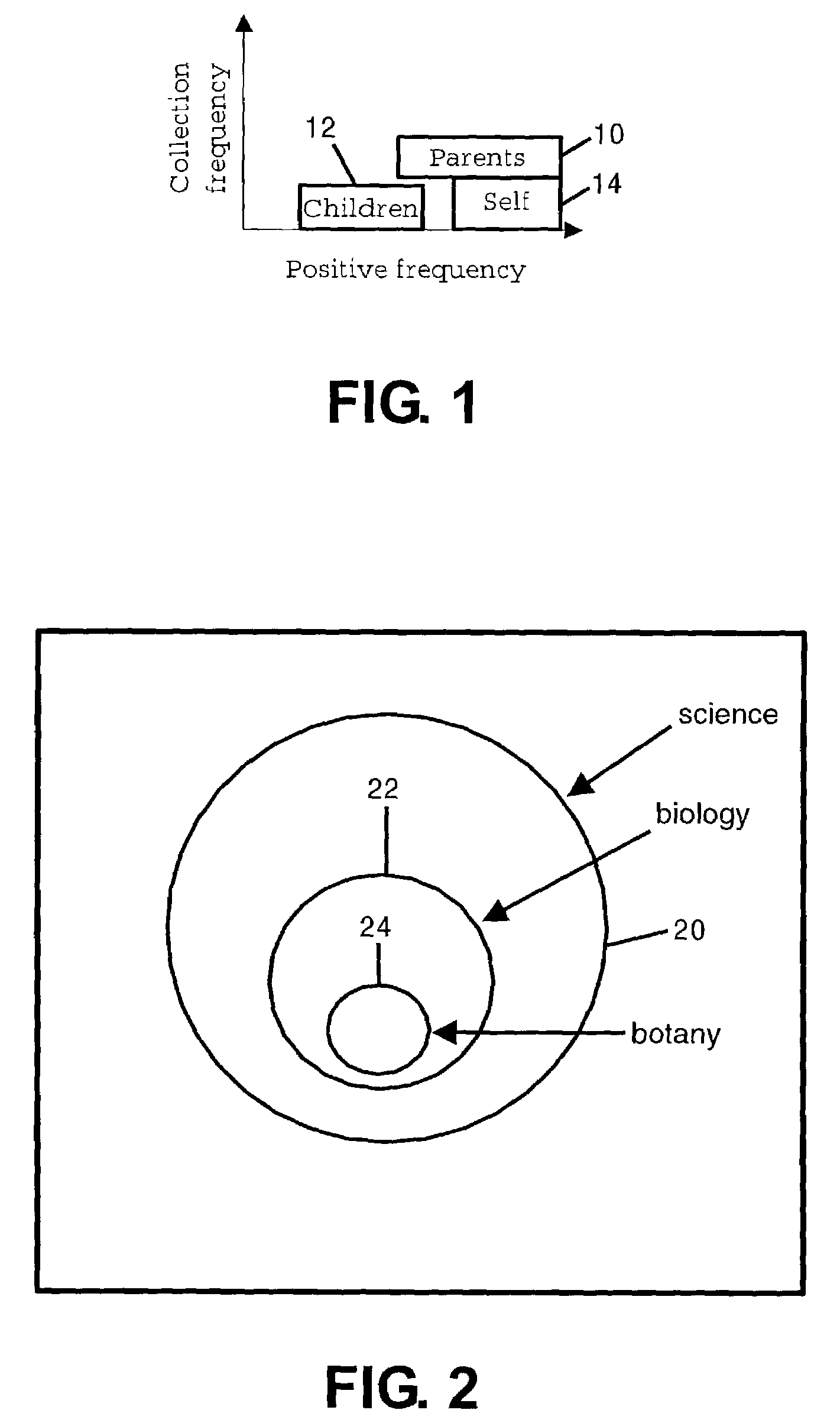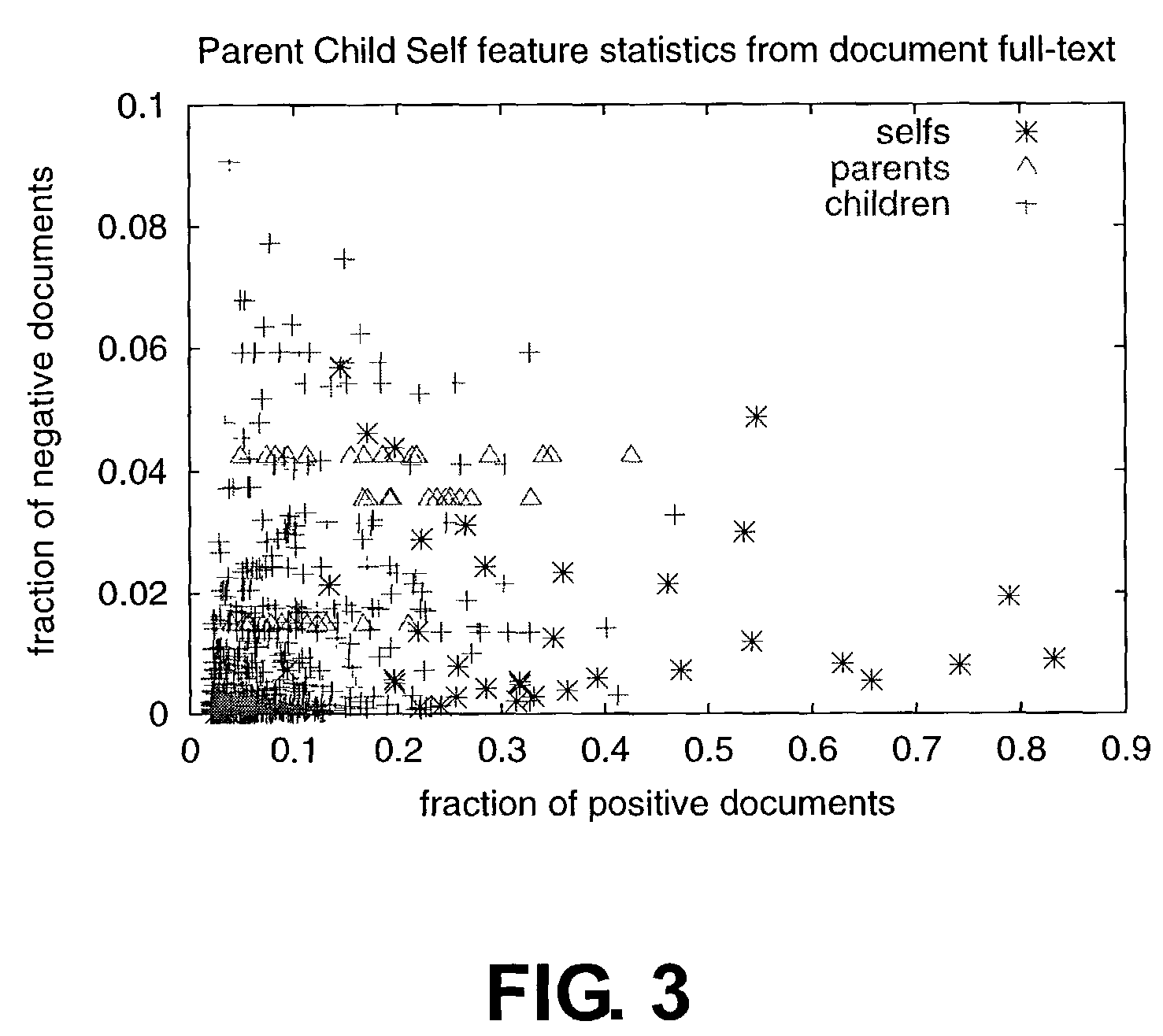Inferring hierarchical descriptions of a set of documents
a hierarchical description and document technology, applied in the field of search of the world wide web, can solve the problems of high expected entropy loss, and relational not necessarily related, and achieve the effect of improving information retrieval
- Summary
- Abstract
- Description
- Claims
- Application Information
AI Technical Summary
Benefits of technology
Problems solved by technology
Method used
Image
Examples
Embodiment Construction
[0036]Automatic selection of parent, self and child features can be useful for several purposes including automatic labeling of web directories or improving information retrieval. Another important use could be for automatically naming generated clusters, as well as recommending more general and more specific concepts, using only the summary statistics of a cluster and background collection statistics.
[0037]It is possible to distinguish between parent, self and child features based on an analysis of the frequency of a feature f in a set of documents (the “positive cluster”), compared to the frequency of feature f in the entire collection of documents, sometimes referred to as the negative set. Specifically, if f is very common in the positive cluster, but relatively rare in the collection, then f may be a good self term. A feature that is common in the positive cluster, but also somewhat common in the entire collection, is a description of the positive cluster, but is more general a...
PUM
 Login to View More
Login to View More Abstract
Description
Claims
Application Information
 Login to View More
Login to View More - R&D
- Intellectual Property
- Life Sciences
- Materials
- Tech Scout
- Unparalleled Data Quality
- Higher Quality Content
- 60% Fewer Hallucinations
Browse by: Latest US Patents, China's latest patents, Technical Efficacy Thesaurus, Application Domain, Technology Topic, Popular Technical Reports.
© 2025 PatSnap. All rights reserved.Legal|Privacy policy|Modern Slavery Act Transparency Statement|Sitemap|About US| Contact US: help@patsnap.com



